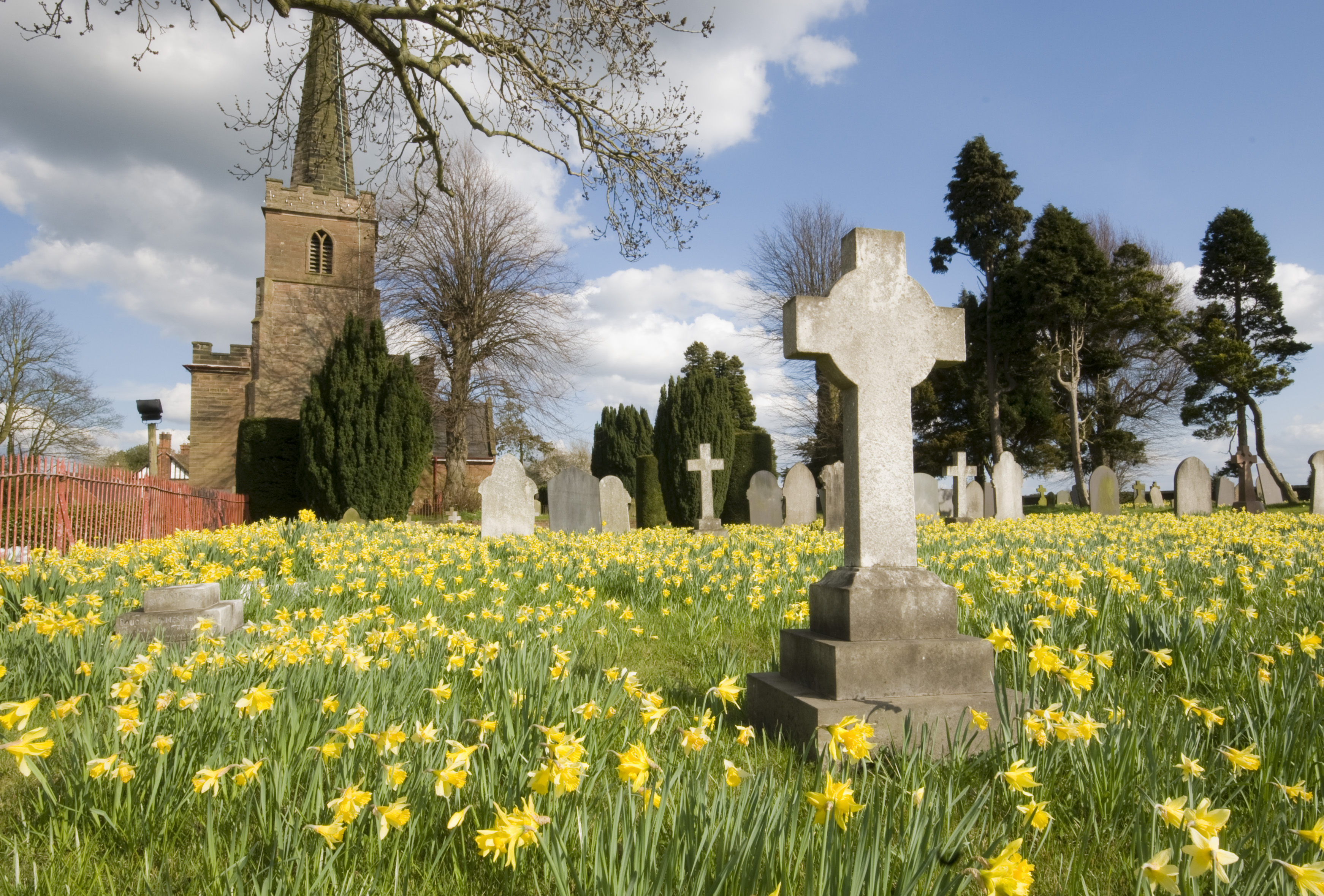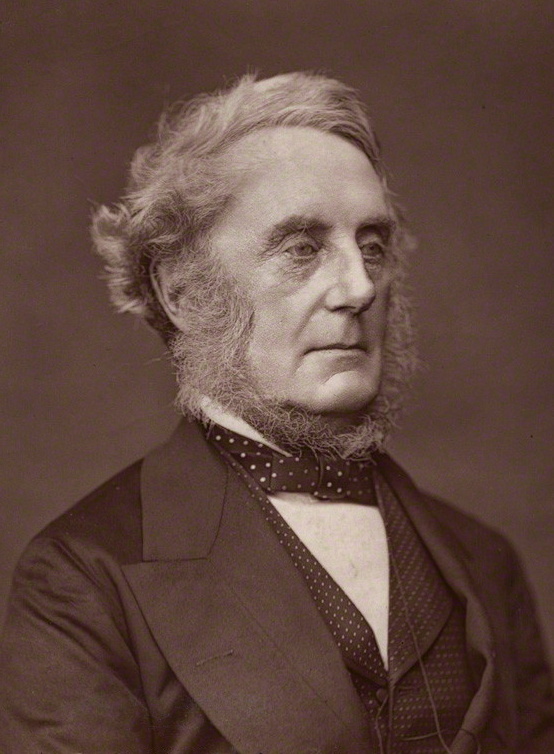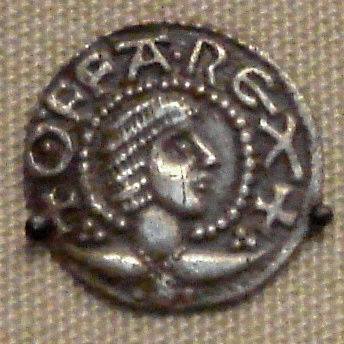|
Whittington, Staffordshire
Whittington is a village and civil parish which lies approximately 3 miles south east of Lichfield, in the Lichfield district of Staffordshire, England. According to the 2001 census it had a population of 2,591, increasing to 2,603 at the 2011 Census. The parish council is a joint one with Fisherwick. The Coventry Canal borders the village to the north and east. History The place name of Whittington derives from the Old English for an estate associated with a man called Hwīta. Hwīta was an Anglo-Saxon personal name meaning 'white', given to someone with fair hair or pale complexion. Whittington formed part of the Bishop of Lichfield’s great manorial estate, which covered much of south-east Staffordshire. Known as the Manor of Longdon, it had been created for the bishop of Lichfield from the time of the Saxons, they remained the lord of the manor until 1546 when the bishop was forced to surrender it to Sir William Paget, one of Henry VIII's principal Secretaries of State, ... [...More Info...] [...Related Items...] OR: [Wikipedia] [Google] [Baidu] |
Lichfield (UK Parliament Constituency)
Lichfield is a constituency in Staffordshire represented in the House of Commons of the UK Parliament since its 1997 recreation by Michael Fabricant, a Conservative. Boundaries ; 1918–1950: The Boroughs of Lichfield and Tamworth, the Urban Districts of Perry Barr and Rugeley, the Rural District of Lichfield, and parts of the Rural Districts of Tamworth and Walsall. ; 1997–2010: The District of Lichfield wards of All Saints, Alrewas, Armitage with Handsacre, Boney Hay, Central, Chadsmead, Chase Terrace, Chasetown, Colton and Ridwares, Curborough, Hammerwich, Highfield, King's Bromley, Leomansley, Longdon, Redslade, St John's, Stowe, Summerfield, and Whittington, and the Borough of East Staffordshire wards of Bagots and Yoxall. ; 2010 onwards: The District of Lichfield wards of All Saints, Alrewas and Fradley, Armitage with Handsacre, Boley Park, Boney Hay, Burntwood Central, Chadsmead, Chase Terrace, Chasetown, Colton and Mavesyn Ridware, Curborough, Hammerwich, Highfie ... [...More Info...] [...Related Items...] OR: [Wikipedia] [Google] [Baidu] |
Grade II* Listed Building
In the United Kingdom, a listed building or listed structure is one that has been placed on one of the four statutory lists maintained by Historic England in England, Historic Environment Scotland in Scotland, in Wales, and the Northern Ireland Environment Agency in Northern Ireland. The term has also been used in the Republic of Ireland, where buildings are protected under the Planning and Development Act 2000. The statutory term in Ireland is " protected structure". A listed building may not be demolished, extended, or altered without special permission from the local planning authority, which typically consults the relevant central government agency, particularly for significant alterations to the more notable listed buildings. In England and Wales, a national amenity society must be notified of any work to a listed building which involves any element of demolition. Exemption from secular listed building control is provided for some buildings in current use for worshi ... [...More Info...] [...Related Items...] OR: [Wikipedia] [Google] [Baidu] |
Marquess Of Anglesey
Marquess of Anglesey ( cy, Ardalydd Môn) is a title in the Peerage of the United Kingdom. It was created in 1815 for Henry Paget, 2nd Earl of Uxbridge, a hero of the Battle of Waterloo, second in command to the Duke of Wellington. The Marquess holds the subsidiary titles of Earl of Uxbridge, in the County of Middlesex, in the Peerage of Great Britain (1784), Baron Paget, de Beaudesert, in the Peerage of England (1553), and is also an Irish Baronet, of Plas Newydd in the County of Anglesey and of Mount Bagenall in the County of Louth. The family seat now is Plas Newydd, at Llanddaniel Fab, Anglesey. Most recent marquesses are buried at St Edwen's Church, Llanedwen, built and maintained by the Marquess. The former family seat was Beaudesert, near Cannock Chase, Staffordshire. Family history 1553-1815 The Paget family descends from Sir William Paget, a close adviser to Henry VIII, who in 1553 was summoned to Parliament as Lord Paget de Beaudesert. His younger son ... [...More Info...] [...Related Items...] OR: [Wikipedia] [Google] [Baidu] |
War Office
The War Office was a department of the British Government responsible for the administration of the British Army between 1857 and 1964, when its functions were transferred to the new Ministry of Defence (MoD). This article contains text from this source, which is available under th Open Government Licence v3.0 © Crown copyright It was equivalent to the Admiralty, responsible for the Royal Navy (RN), and (much later) the Air Ministry, which oversaw the Royal Air Force (RAF). The name 'War Office' is also given to the former home of the department, located at the junction of Horse Guards Avenue Horse Guards Avenue is a road in the City of Westminster, London, linking the major thoroughfares of Whitehall and Victoria Embankment, to the east of the Horse Guards building and parade area. The entrance of the Main Building of the Minist ... and Whitehall in central London. The landmark building was sold on 1 March 2016 by HM Government for more than British pound, £3 ... [...More Info...] [...Related Items...] OR: [Wikipedia] [Google] [Baidu] |
Cardwell Reforms
The Cardwell Reforms were a series of reforms of the British Army undertaken by Secretary of State for War Edward Cardwell between 1868 and 1874 with the support of Liberal prime minister William Ewart Gladstone. Gladstone paid little attention to military affairs but he was keen on efficiency. In 1870, he pushed through Parliament major changes in Army organisation. Germany's stunning triumph over France in the Franco-Prussian War proved that the Prussian system of professional soldiers with up-to-date weapons was far superior to the traditional system of gentlemen-soldiers that Britain used. The Reforms were not radical; they had been brewing for years and Gladstone seized the moment to enact them. The goal was to centralise the power of the War Office, abolish the purchase of officers' commissions, and create reserve forces stationed in Britain by establishing short terms of service for enlisted men. Ending the purchase system was controversial. The families of officers ha ... [...More Info...] [...Related Items...] OR: [Wikipedia] [Google] [Baidu] |
Tamworth, Staffordshire
Tamworth (, ) is a market town and borough in Staffordshire, England, north-east of Birmingham. The town borders North Warwickshire to the east and north, Lichfield to the north, south-west and west. The town takes its name from the River Tame, which flows through it. The population of Tamworth borough () was . The wider urban area had a population of 81,964. Tamworth was the principal centre of royal power of the Anglo-Saxon Kingdom of Mercia during the 8th and 9th centuries. It hosts a simple but elevated 12th century castle, a well-preserved medieval church (the Church of St Editha) and a Moat House. Tamworth was historically divided between Warwickshire and Staffordshire until 1889, when the town was placed entirely in Staffordshire. The town's industries include logistics, engineering, clothing, brick, tile and paper manufacture. Until 2001 one of its factories was Reliant, which produced the Reliant Robin three-wheeler car and the Reliant Scimitar sports car. T ... [...More Info...] [...Related Items...] OR: [Wikipedia] [Google] [Baidu] |
Heath (habitat)
A heath () is a shrubland habitat found mainly on free-draining infertile, acidic soils and characterised by open, low-growing woody vegetation. Moorland is generally related to high-ground heaths with—especially in Great Britain—a cooler and damper climate. Heaths are widespread worldwide but are fast disappearing and considered a rare habitat in Europe. They form extensive and highly diverse communities across Australia in humid and sub-humid areas where fire regimes with recurring burning are required for the maintenance of the heathlands.Specht, R.L. 'Heathlands' in 'Australian Vegetation' R.H. Groves ed. Cambridge University Press 1988 Even more diverse though less widespread heath communities occur in Southern Africa. Extensive heath communities can also be found in the Texas chaparral, New Caledonia, central Chile, and along the shores of the Mediterranean Sea. In addition to these extensive heath areas, the vegetation type is also found in scattered locations a ... [...More Info...] [...Related Items...] OR: [Wikipedia] [Google] [Baidu] |
Richard Dyott (died 1891)
Richard Dyott (1808 – 13 February 1891) was an English Conservative Party politician who sat in the House of Commons from 1865 to 1880. Dyott was the son of General William Dyott of Freeford Hall, Staffordshire and his wife Eleanor Thompson daughter of Samuel Thompson of Greenmount, co. Antrim. He was educated at Westminster School and at Trinity College, Cambridge. He entered the army as Ensign in the 53rd Foot in October 1827, became lieutenant in June 1831, and captain in August 1838. Dyott stood unsuccessfully for parliament at South Staffordshire in August 1837, and at Lichfield in July 1841. In 1842 he retired from the army on half-pay. He was a Deputy Lieutenant and J.P. for Staffordshire and was High Sheriff of Staffordshire in 1856. He was Lieutenant-colonel of the Staffordshire Militia. At the 1865 general election Dyott was elected Member of Parliament A member of parliament (MP) is the representative in parliament of the people who live in their electora ... [...More Info...] [...Related Items...] OR: [Wikipedia] [Google] [Baidu] |
Gothic Architecture
Gothic architecture (or pointed architecture) is an architectural style that was prevalent in Europe from the late 12th to the 16th century, during the High and Late Middle Ages, surviving into the 17th and 18th centuries in some areas. It evolved from Romanesque architecture and was succeeded by Renaissance architecture. It originated in the Île-de-France and Picardy regions of northern France. The style at the time was sometimes known as ''opus Francigenum'' (lit. French work); the term ''Gothic'' was first applied contemptuously during the later Renaissance, by those ambitious to revive the architecture of classical antiquity. The defining design element of Gothic architecture is the pointed or ogival arch. The use of the pointed arch in turn led to the development of the pointed rib vault and flying buttresses, combined with elaborate tracery and stained glass windows. At the Abbey of Saint-Denis, near Paris, the choir was reconstructed between 1140 and 1144, ... [...More Info...] [...Related Items...] OR: [Wikipedia] [Google] [Baidu] |
Richard Levett
Sir Richard Levett (also spelled Richard Levet) (died 1711), Sheriff, Alderman and Lord Mayor of London, was one of the first directors of the Bank of England, an adventurer with the London East India Company and the proprietor of the trading firm Sir Richard Levett & Company. He had homes at Kew and in London's Cripplegate, close by the Haberdashers Hall. A pioneering British merchant and politician, he counted among his friends and acquaintances Samuel Pepys, Robert Blackborne, John Houblon, physician to the Royal Family and son-in-law Sir Edward Hulse, Lord Mayor Sir William Gore, his brother-in-law Chief Justice Sir John Holt, Robert Hooke, Sir Owen Buckingham, Sir Charles Eyre and others. Early life and career beginnings Although born into a once-powerful Sussex Anglo-Norman family (its surname derives from the village of Livet in Normandy), the future Lord Mayor grew up in straitened circumstances after the family lost much of its medieval wealth. Levett's father wa ... [...More Info...] [...Related Items...] OR: [Wikipedia] [Google] [Baidu] |
Freeford Hall
Freeford Manor (previously known as Freeford Hall) is a privately owned 18th-century country house at Freeford, near Lichfield, Staffordshire. It is the home of the Dyott family and is a Grade II listed building In the United Kingdom, a listed building or listed structure is one that has been placed on one of the four statutory lists maintained by Historic England in England, Historic Environment Scotland in Scotland, in Wales, and the Northern Ir .... The Dyotts of Lichfield acquired interests in the manor of Freeford over many years from about 1606. When Richard Dyott (died 1719), Richard Dyott, Member of Parliament for Lichfield (UK Parliament constituency), Lichfield 1690-1715 died in 1719, his son, also Richard decided to move from the city to live at Freeford. In about 1730 he built a new small three bayed red brick house which was extended and improved throughout the 18th century. His son, another Richard was Recorder of Lichfield and in 1798 High Sheriff of ... [...More Info...] [...Related Items...] OR: [Wikipedia] [Google] [Baidu] |
Levett
Levett is a surname of Anglo-Norman origin, deriving from eLivet, which is held particularly by families and individuals resident in England and British Commonwealth territories. Origins This surname comes from the village of Livet-en-Ouche, now Jonquerets-de-Livet, in Eure, Normandy. Here the de Livets were undertenants of the de Ferrers family, among the most powerful of William the Conqueror's Norman lords. The name Livet (first recorded as Lived in the 11th century), of Gaulish etymology, may mean a "place where yew-trees grow". The first de Livet in England, Roger, appears in Domesday as a tenant of the Norman magnate Henry de Ferrers. de Livet held land in Leicestershire, and was, along with Ferrers, a benefactor of Tutbury Priory. By about 1270, when the Dering Roll was crafted to display the coats of arms of 324 of England's most powerful lords, the coat of arms of Robert Livet, Knight, was among them. Some Levetts were early knights and Crusaders; many members of bo ... [...More Info...] [...Related Items...] OR: [Wikipedia] [Google] [Baidu] |





.jpeg/1200px-Amrum_(187753235).jpeg)
.jpg)

